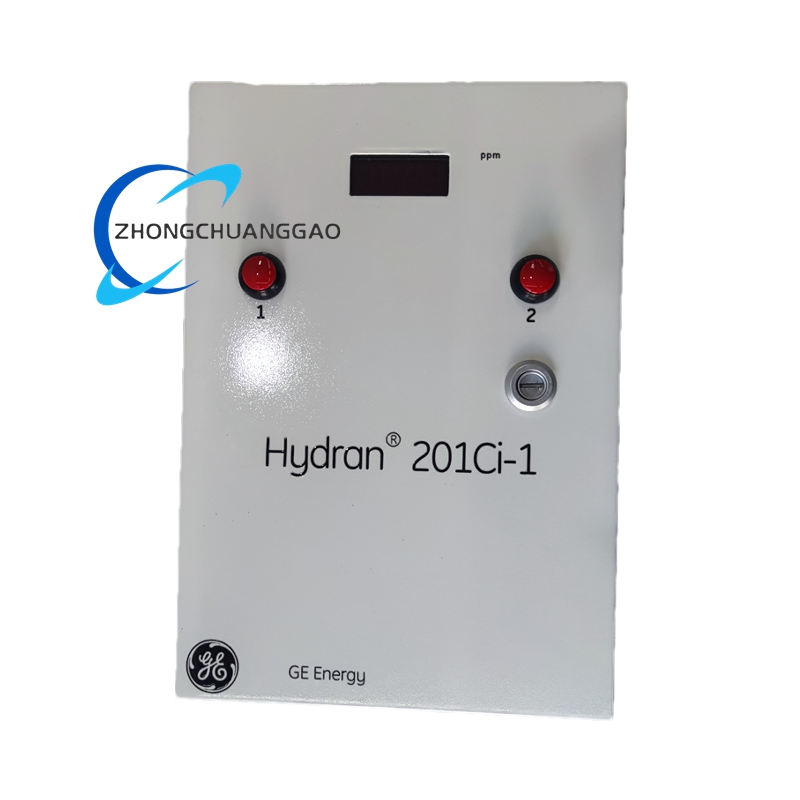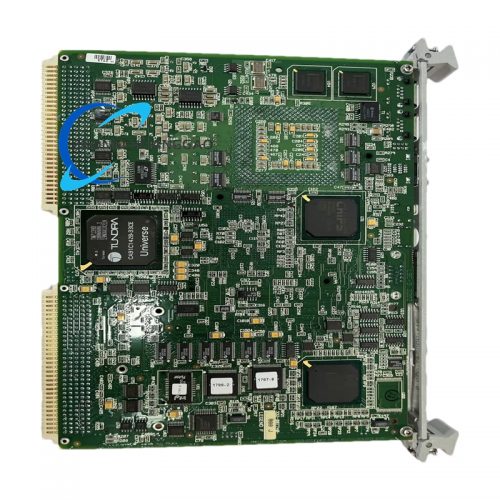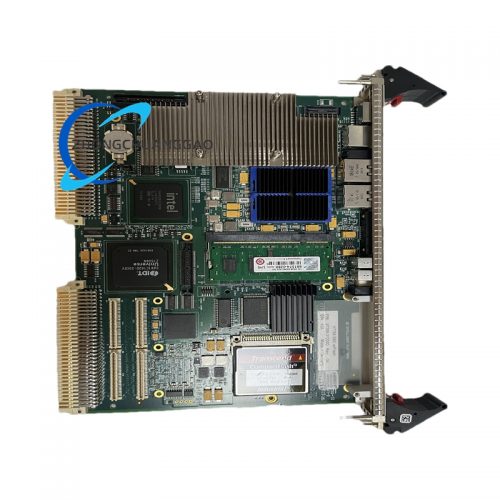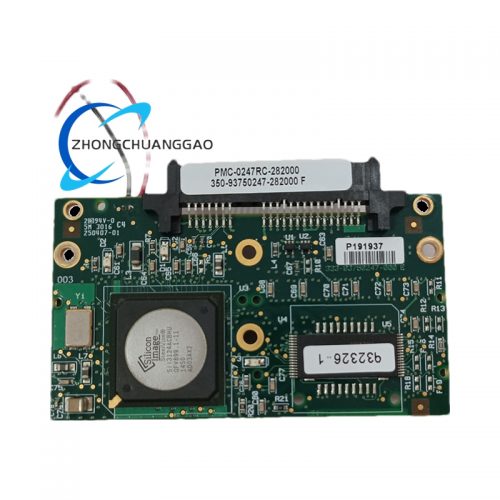Product Short Description
- Model: H201CI-1
- Manufacturer: GE (GE Vernova/GE Grid Solutions)
- Type: HYDRAN 201Ti Transformer DGA Monitoring System Single-Channel Controller
- Compatible Sensor: GE HYDRAN® 201Ti Smart Transmitter
- Channels: 1
- Display: Backlit LCD (2 rows × 16 characters)
- Interfaces:
- Local USB port (Type B connector)
- RS-485 (terminal block)
- Communication Protocols: Modbus or Hydran protocol (via RS-485)
- Analog Output: 4-20 mA (0-2000 ppm range, isolated to 2000 VAC RMS)
- Alarm Relays: 3 dry contact relays (C-type, SPDT, NO/NC, 3 A @ 250 VAC or 30 VDC)
Description
- Alarm Types:
- Gas alarm (Hi)
- Gas alarm (HiHi)
- Service alarm (battery, sensor, temperature)
- Power Requirements: 90–132 VAC or 180–264 VAC (switchable), 47–63 Hz, max 475 VA
- Operating Temperature: -40°C to +55°C
- Humidity: 0–95% RH (non-condensing)
- Enclosure Rating: NEMA Type 4X (IP66)
- Dimensions: Diameter 178 mm (7”) × Length 180 mm (7-1/8”)
- Weight: Approx. 5.6 kg (12 lb)
Functional Features
- Real-Time Gas Detection: Monitors dissolved gases in transformer oil with high precision, providing early warnings of internal faults such as partial discharge, arcing, or insulation degradation.
- Alarm Management: Supports configurable thresholds for gas concentration and rate-of-change alarms, with three relay outputs for local or remote signaling.

- Analog Output: 4-20 mA signal for integration with SCADA, DCS, or data loggers, enabling trend analysis and remote monitoring.
- User Interface: Backlit LCD displays real-time gas readings, alarm status, and system diagnostics. Local buttons allow for alarm acknowledgment and basic configuration.
- Network Communication: RS-485 port supports daisy-chain connections for up to 32 controllers or 201Ti units, forming a local network with a maximum range of 1200 meters (4000 feet).
- Self-Diagnostics: Performs automatic system checks and logs events for maintenance troubleshooting.
- Rugged Design: NEMA 4X/IP66-rated enclosure ensures reliable operation in harsh environments, including extreme temperatures and high humidity.
Application Scenarios
- Power Generation: Online monitoring of transformers in power plants to detect incipient faults and prevent catastrophic failures.
- Substations: Continuous protection of distribution transformers in electrical grids.
- Petrochemicals: Monitoring transformers in refineries and chemical plants where equipment reliability is critical.
- Renewable Energy: Protecting transformers in wind and solar farms to minimize downtime.
- Industrial Manufacturing: Ensuring safe operation of transformers in steel mills, automotive plants, and other heavy industries.
Design Advantages
- Early Fault Warning: Enables proactive maintenance by identifying gas trends before they reach critical levels.
- Cost-Effective: Reduces the need for manual oil sampling and laboratory analysis, lowering operational costs.
- Scalability: Supports expansion of monitoring networks by adding more controllers or sensors.
- Ease of Integration: Compatible with standard industrial communication protocols (Modbus, RS-485) for seamless system integration.
- Reliability: Built with industrial-grade components to withstand harsh conditions and ensure long-term stability.




Reviews
There are no reviews yet.